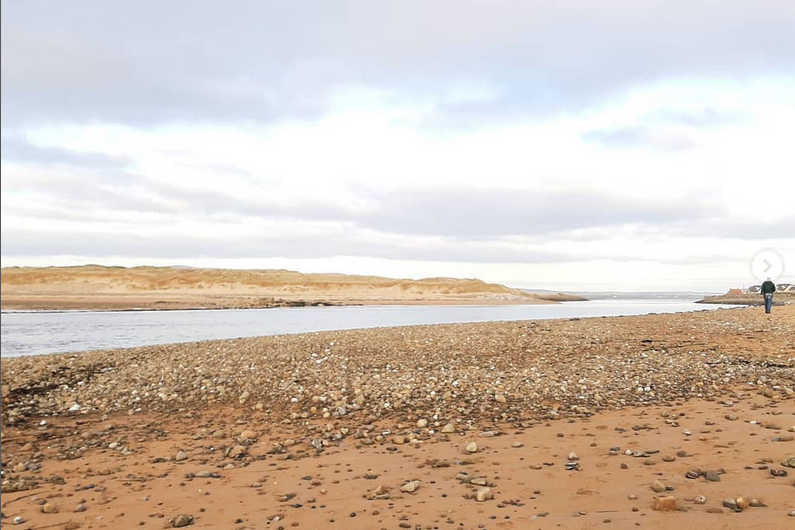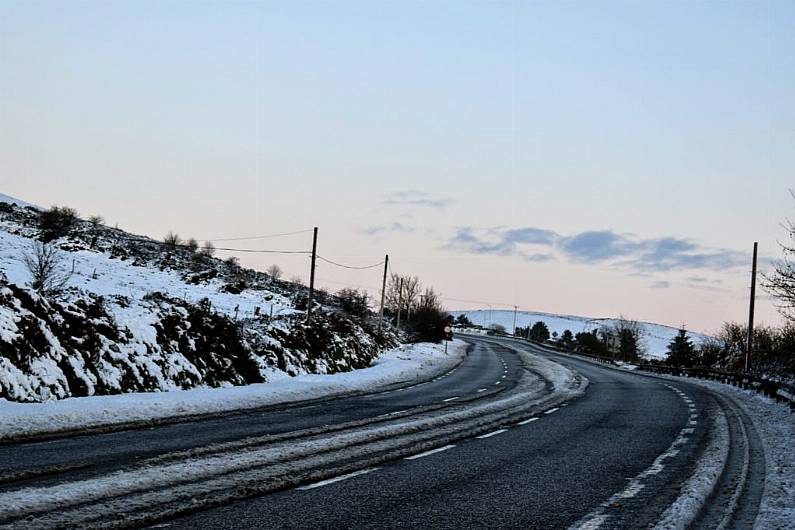A decision is expected by the end of September on the OPW’s plans for the Feale/Cashen Estuary Drainage Project.
Proposals recommend installing 16 pumping stations to deal with flooding and increased water levels, which are having a significant impact on land drainage adjacent to the estuary.
Close to 700 houses are within this catchment area.
The OPW says flooding and increased water levels are having a significant impact on land drainage adjacent to the Cashen estuary, which is south of Ballybunion and north of Ballyduff.
The OPW says in recent years, there’s been higher and more prolonged flooding in low-lying areas currently drained by the sluiced back drain systems in the River Feale Certified Drainage Scheme; there are 690 houses within this area.
It says the preferred option to manage flood risk and drainage is installing 16 pumping stations, seven electric and nine wind driven; dredging was ruled out.
There’s already one pump in the scheme, on the River Brick at Rattoo, which is said to work well.
The OPW states the proposed pumps would enhance the existing drainage system, by pumping water from drainage channels on the defended side of the embankment into the river side.
They would operate periodically, during the grazing period of March to October.
The OPW says a Natura Impact Statement (NIS) and Environmental Impact Assessment (EIA) screening report were developed for this Proposed Cashen Estuary Pump Infrastructure for the Feale OPW Arterial Drainage Scheme.
The NIS went out on public consultation, and closed last summer.
The OPW has now confirmed to Radio Kerry News that submissions received as part of this consultation identified the need for extra environmental surveys on wintering birds, and these were carried out between last December and March.
It’s now hoped the updated Natura Impact Statement will go out on public consultation by the end of June or into July, and depending on submissions received, a decision is expected by end of September.
The OPW says it’ll take at least five years to construct all pumps, with the work to be done during summers, as it’s highly weather dependent.
Around 250 people attended a recent meeting in Ballyduff organised by the Local Cashen Drainage Group, to brief people on the scheme.
--------------------------------------------------------------------------------------------------------------------------------------------------------------
More detail on the process:
The OPW (as the Commissioners of Public Works in Ireland) has statutory responsibility for the maintenance of drainage schemes completed under the Arterial Drainage Acts 1945 and 1995.
As part of the Feale Arterial Drainage Scheme, the OPW has identified maintenance works that need to be carried out.
There are a number of documents that impact this, including the European Commission Water Framework Directive, and the Third Cycle Draft River Basin Management Plan 2022-2027.
The OPW says flooding and increased water levels are having a significant impact on land drainage adjacent to the Cashen estuary, which is south of Ballybunion and north of Ballyduff.
There are 690 houses and significant infrastructure within the area of this scheme.
In recent years, local stakeholders reported to the OPW that higher and more prolonged flooding has been occurring in the low-lying polders (which is land reclaimed from water), that are drained by the OPW’s sluiced back drain systems.
In 2017 the OPW appointed engineering consultants to identify suitable measures to manage flood risk and drainage aspects of the River Feale Estuary.
Following a feasibility assessment, lowering of bed levels in the estuary by dredging, as was done originally for land drainage, was considered, but was ruled out when environmental, technical, and cost related issues were taken into account.
It emerged the preferred option to manage flood risk and drainage is installing 16 pumping stations, seven electric and nine wind driven pumps.
The OPW says the mix of electric and wind driven pumps is based on size and characteristics of the land protected within the polder (land reclaimed from water).
There’s already one such a pump in the scheme, on the River Brick at Rattoo, which is said to work well.
The OPW states the proposed pumps would enhance the existing gravity drainage system, by pumping water from drainage channels on the defended side of the embankment into the river side, regardless of the water level.
The pumps would operate periodically, during the grazing period of March to October, when gravity discharge requires extra assistance.
This would include periods of high rainfall or tidal inundation, which is when seawater is driven up stormwater drainage outlets, or over land that’s normally dry ground.
The OPW says a Natura Impact Statement (NIS), Environmental Impact Assessment (EIA) screening report, and various supporting documentation were developed for the preferred scheme to install 16 pumps for the Proposed Cashen Estuary Pump Infrastructure for the Feale OPW Arterial Drainage Scheme.
The NIS went out on public consultation, and that closed last summer (July 2022).
The OPW has now confirmed to Radio Kerry News that submissions received as part of the consultation identified the need for additional environmental surveys on wintering birds, and these were carried out between December 2022 and March 2023.
A habitats walkover also took place in April this year.
It’s now hoped the updated Natura Impact Statement to incorporate these surveys will go out on public consultation by the end of June or into July (the end of quarter 2 or early quarter 3 of this year).
This will take about six weeks and, depending on submissions received, a decision is expected by end of September (end of quarter 3).
The OPW says it intends to begin construction works, once statutory consent is in place, with the works expected to take at least five years to construct.
This will be broken into sections, to be completed during the summer period, as the works are highly weather dependent.
The Local Cashen Drainage Group recently held a public meeting (Friday night May 19th) in Ballyduff Community Centre, with agricultural consultant, Dr Ned Bolger, who’s Chairman of the group, briefing people on the process.
Around 250 people attended the meeting; some people weren’t in favour of the plans to install pumps.
Many would like to see dredging carried out; this is what would have been done in the past, but this has previously been ruled out by the OPW.







